Gardening with Zucchini is rewarding. Temperature plays a significant role in Zucchini growth. Even though plants love warm weather, it is crucial to understand how hot is too hot for them.
Zucchinis love warm weather but not heated weather. Excessive hot weather leads to poor growth and lower yields. 100-115°F is the highest temperature for Zucchinis. Above this, the plant will suffer and won’t develop or produce good-quality fruits.
Learning about the heat tolerance of Zucchinis is equally important, just like the other growing conditions. This article will explore Zucchini’s ideal temperature, highest temperature tolerance, and how to prevent heat stress.
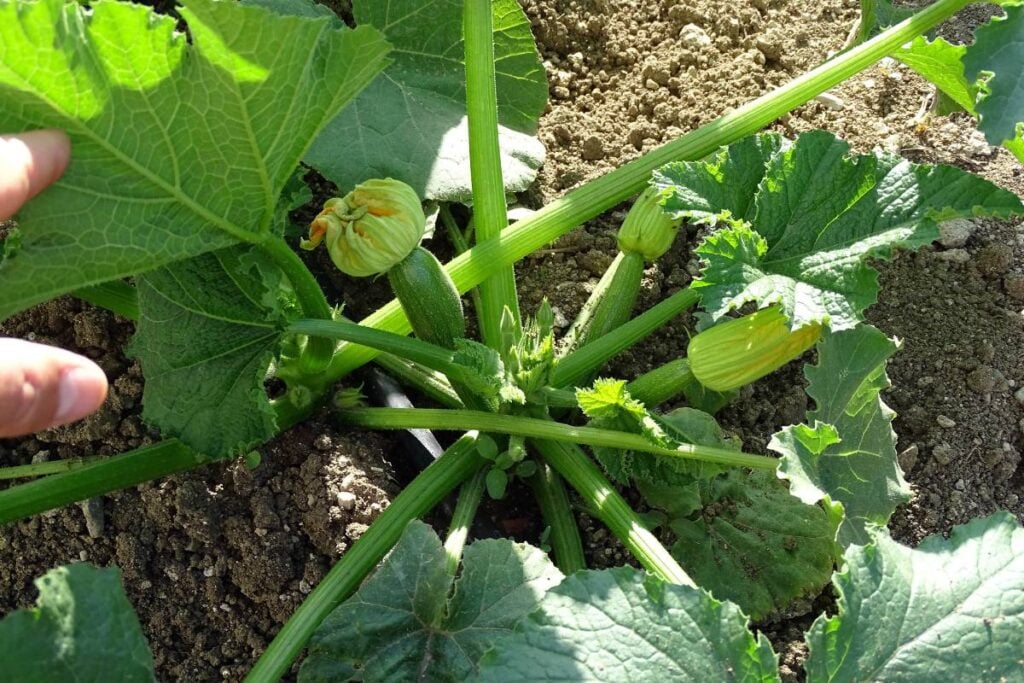
Optimal Temperature Range for Zucchini
Zucchini is a lovely summer squash plant. Learning about their ideal temperature requirements is crucial for successful cultivation.
You can provide the Zucchini with the proper requirements and growing conditions, whether you are a seasoned gardener or a novice.
Zucchini thrives best under warm conditions.
The ideal temperature range is between 70°F and 90°F.
It should be at least 60-70°F.
It can also tolerate temperatures slightly beyond the range, for example, 95°F in warm weather.
The temperature needs to be consistently warm throughout their growing season.
Zucchini will exhibit good growth within the ideal range with many leaves, flowers, and fruits.
I have been growing Zucchinis for a long time.
Belonging to Zone 7, my Zucchini thrives as they receive a long growing season.
The temperature stays warm consistently for 2-3 months.
Within this time, Zucchini can develop, and fruits mature quickly.
However, sometimes, I need to provide some protection if the temperature crosses 95°F.
Different growth stages might influence the temperature needs, but not much:
- Temperature ranges are very crucial when the seedlings are trying to establish themselves. Cooler temperatures can delay germination, whereas hot weather can inhibit seed viability.
- Maintain an optimal temperature range when the plant enters the vegetative and flowering stage. Temperatures above 95-100°F will lead to fewer flowers, negatively impacting pollination.
- When the plant enters the fruit stage, it thrives when temperatures are within 70-95°F. Temperatures above 95-100°F will degrade the fruit quality, reduce its sugar content, and increase the bitterness.
Zucchini’s Heat Tolerance
Zucchini plants are famous among gardeners due to their versatility, fast-growing and producing habits, and tolerance for hot weather.
Zucchini plants love warm climates and can thrive in heat to some extent.
The problem occurs when the temperature gets too high and heated.
Zucchini will be distressed when exposed to extremely high temperatures for prolonged periods. So, it becomes crucial to understand their heat tolerance and protect them when needed.
On average, the highest temperature Zucchini plants can tolerate is 115°F.
If your region stays within this range, you should not have problems growing them.
However, the fruits and flowers will begin to diminish once the temperature crosses 95°F and reaches 100°F.
The Zucchinis will stay undamaged up to 95°F.
Once the temperature rises above 100-115°F, Zucchini becomes sensitive to heat and starts suffering.
Belonging to Zone 7, I can say that the summer temperature can sometimes stay within 90°F and sometimes cross 95°F.
It depends on the weather.
When needed, I protect my precious plants by increasing watering, adding mulch, and putting up shade during the hottest time of the day.
Effects of Extreme Heat on Zucchini
Zucchini has an exceptional heat tolerance.
It can endure warm temperatures up to 115°F. Hot temperatures with plenty of moisture and sunlight encourage optimal growth and lots of fruits.
When Zucchini gets exposed to temperatures beyond 100-115°F, it will struggle to develop.
Here are some adverse effects of extreme heat:
Sudden growth
Zucchini loves consistent warm weather for 2-3 months.
Hot temperatures accompanied by moisture and sunlight can encourage the Zucchinis to grow faster.
Sometimes, the Zucchinis will suddenly increase in size.
While it is okay, a sudden growth improvement and increase in the fruit size can lead to fruit splitting.
You must pick them up faster when they are young and use them in stir fry or stuffing.
Poor fruit growth
While hot temperatures are good for Zucchinis, extreme heat can be harmful.
Extremely high temperatures combined with excessive dryness and high humidity can affect pollination.
It makes wind pollination very difficult, especially for the male flowers.
Male flowers grow much before the female flowers.
Weather can keep the local pollinators active; many flowers can die before pollination due to the hot weather.
In this case, you must hand-pollinate them instead of waiting for the natural pollination methods.
Looking for gardening supplies? We have tested 100's of products before recommending them to you guys. Check out our best pick below:
| Image | Gardening Supplies | Best Price? |
|---|---|---|
 Top
Top Top
Top | Raised Garden Bed Kit | Check On Amazon |
 | XLUX Soil Moisture Meter, Plant Water Monitor, Soil Hygrometer Sensor for Gardening, Farming, Indoor and Outdoor Plants, No Batteries Required | No Results |
 Top
Top Top
Top | 82 Pcs Garden Tools Set and Extra Succulent Tools Set | Check On Amazon |
 | Joeys Garden Expandable Garden Hose with 8 Function Hose Nozzle, Lightweight Anti-Kink Flexible Garden Hoses, Extra Strength Fabric with Double Latex Core, (50 FT, Black) | No Results |
 Top
Top Top
Top | Dual Chamber Compost Tumbler | Check On Amazon |
 Top
Top Top
Top | Sunnyglade Plant Stakes | Check On Amazon |
 Top
Top Top
Top | Organic Cold Pressed Neem Seed Oil | Check On Amazon |
 Top
Top Top
Top | Mighty Mint Gallon :-Insect and Pest Control Peppermint Oil | Check On Amazon |
 Top
Top Top
Top | Scotts DiseaseEx Lawn Fungicide | Check On Amazon |
 Top
Top Top
Top | Jacks Classic 20-20-20 All Purpose Fertilizer | Check On Amazon |
 Top
Top Top
Top | 30,000 Seeds Pollinator Attracting Wildflower Mixture | Check On Amazon |
 Top
Top Top
Top | Survival Vegetable Seeds Garden Kit-Over 16,000 Seeds | Check On Amazon |
Water stress
Watering Zucchini deeply once a week keeps them healthy.
It is applicable when the weather remains warm and not highly heated.
Once the temperature exceeds 115°F, the soil will dry quickly, and the plant will stay dehydrated for prolonged periods.
This can stress the plant, leading to yellowing and stunted or slow growth.
Watering the plant more often and mulching can help in this situation.
Sunburns and diseases
When the temperature is scorching, the sunlight will feel like it burns.
The sun can burn the developing Zucchinis and even the leaves.
The fruits and leaves will lose their color.
The leaves can start having brown colors at the tips and edges, along with curls.
The fruits can become pale and have spongy patches on the surfaces.
There is a higher chance of downy mildew during heated temperatures with high humidity.
The weather will be warm and damp, and the disease can develop within a few days.
Keeping the plant dry at night can help, and broad-spectrum fungicide should be used to treat it.
Bitter fruit
When the plant with fruits stays exposed to extreme heat and direct sunlight for prolonged periods, the fruit loses color and tastes bitter.
You cannot understand the bitterness unless you taste it.
But by the time you do it, it will be too late.
You must try protecting the Zucchinis whenever you see the above signs.
Heat Stress Signs in Zucchini
Here are some possible signs of heat stress in the plant:
- Leaves and stems are wilting
- Dry and hard soil
- Flowers dying and falling off
- Leaves browning, indicating sunburns
- Leaves curling at the tips and edges and turning yellow due to water stress
- Fruits losing color
High Temperatures and Pollination
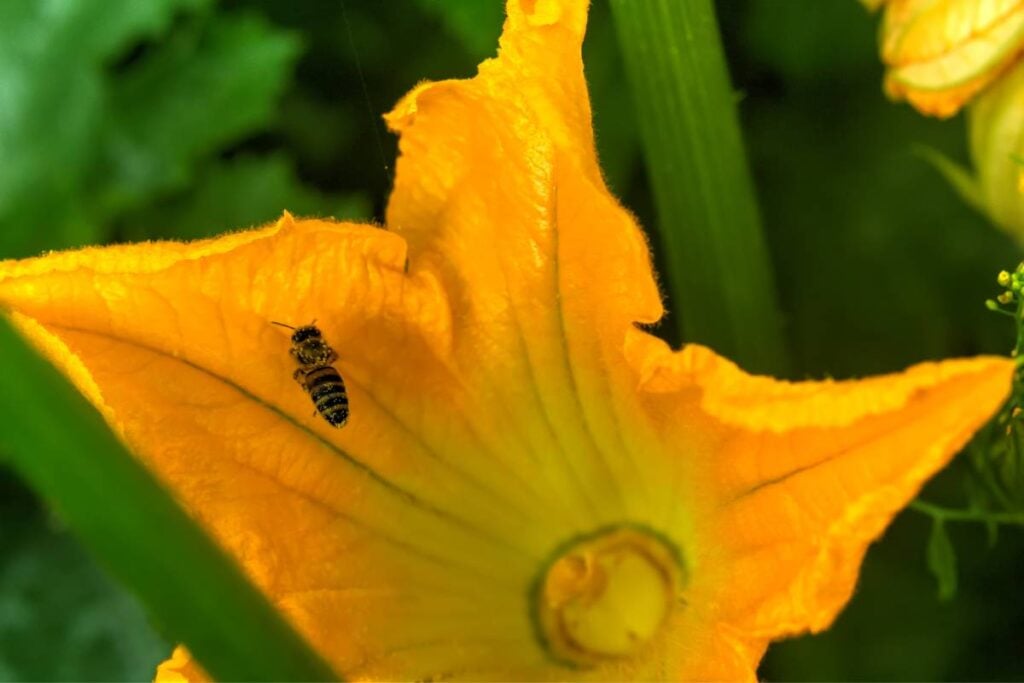
High temperatures can significantly affect pollination.
Excessive high temperature reduces the chances of wind pollination.
People don’t care initially because the local pollinators stay active in hot weather.
But the problem occurs when the heated temperatures start affecting the plant.
Once the temperature crosses 100°F, the plant will start suffering.
At 100-115°F, the flowers start falling off the plant due to the heat.
As a result, the pollinators cannot help the Zucchini in pollination and fruit production.
Even with pollinators, you won’t have flowers left for pollination.
The good thing is you can prevent this.
Instead of waiting for the pollinators and other natural agents to help pollination, you can hand-pollinate them.
Rub the pollen from the male flowers into the female flowers using a cotton swab or paintbrush.
But what will you do if the female flowers are falling off? Hand-pollination won’t be of any help here.
Save your plants from heat and keep them healthy. Keep reading to learn how to protect the Zucchinis from such heated temperatures.
Heat-Related Diseases and Pests
High heat can also invite several diseases and pests, which makes Zucchini more vulnerable to damage and diseases.
That is why people living in hotter zones should take special care of Zucchini plants.
The best option is to grow disease-resistant varieties.
One common disease is powdery and downy mildew caused due to heated temperatures accompanied by high humidity.
You must keep your plant dry at night and use fungicides to fix this.
Other diseases include:
- Cucumber mosaic virus
- Zucchini yellow mosaic virus
- Ringspot virus
- Watermelon mosaic virus
Since cucumbers and watermelons are from the cucurbit families of Zucchinis, the Zucchinis can also receive these diseases.
When the Zucchinis are exposed to scorching temperatures, they become susceptible to various pests.
The soil can dry out, and the plant gets stressed frequently.
Pests can easily damage a stressful plant.
Common pests that can attack your Zucchinis during extreme hot temperatures are:
- Aphids
- Spider mites
- Whiteflies
These thrive best in hot and damp weather. The bugs will reach your plant, suck out the saps, weaken your plant, and leave honeydew behind.
Ants follow up after this due to the honeydew extracts.
Keep your plant protected from heat and consistently moist soil to prevent such disasters.
Applying neem oil can prevent pest infestation to a great extent.
Grow beneficial companions like lavenders and marigolds. Their smell can deter pests.
Protecting Zucchini from Extreme Heat
The colder zones do not struggle with this issue.
Some warmer zones like 7-8 may not need to struggle with it because the temperature rarely crosses 100-115°F.
But zones 9-12 can have sweltering summers, and zones 11-12 are suspected to cross 115°F.
If you belong to a hotter zone where the temperatures can cross 100-115°F, you should protect your Zucchinis from heat stress.
Shade and Cooling Techniques
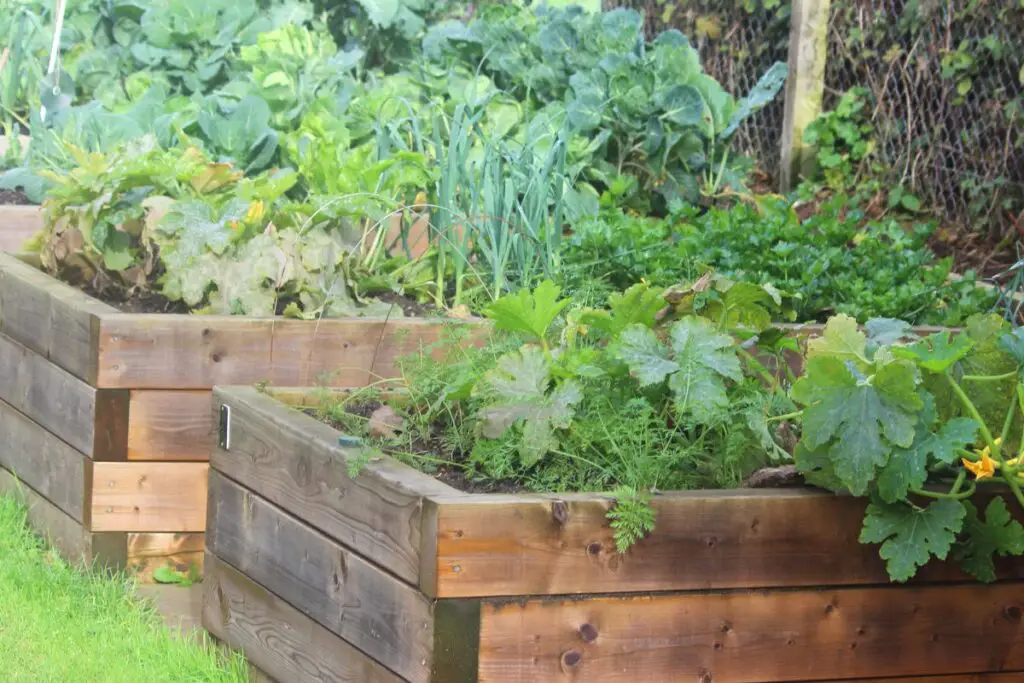
Shading the Zucchinis can protect them from the extreme heat.
Let the plants have enough sunlight from the early morning.
Then, after a few hours, put up the cloth when the temperature rises.
You can erect the shading structures or use shading clothes during the hottest time of the day.
The type of cloth should be such that it does not block the sunlight entirely.
It should only reduce the heat, and filtered sunlight should reach the plants.
You can grow highly sun-loving plants near the Zucchinis.
The sunlight can penetrate through these plants and reach the Zucchini. This way, it can receive light and get saved from the heat.
Mulching and Soil Moisture
When the weather is too hot, the soil dries faster.
The roots struggle to send enough moisture to the other parts of the plant, leading to yellowing and dry leaves.
Add a thick mulch layer around the Zucchini plants to maintain the soil moisture.
Mulch will trap the moisture and prevent evaporation of the moisture.
It will keep the soil moist for prolonged periods, and you don’t have to water them too often.
Add 1-2 inches thick layer of mulch. Another benefit of adding mulch is that it can break down over time and add necessary nutrients to the soil.
If your plant suffers from nutrient deficiencies due to the extreme heat, mulch can help.
Watering Practices
Watering is one of the most important factors when the temperature crosses 95°F and reaches 100-115°F.
Usually, you need to water the Zucchini 1-2 times a week.
But during such high temperatures, increase the frequency.
Sufficient water will keep the plant hydrated and healthy throughout and help them cope with the high temperatures.
Besides, enough watering can keep the plant cool and prevent heat stress.
Consider showering the plant once, ensuring that the leaves have dried.
Wet leaves can lead to powdery mildew.
Water deeply and consistently. Check the moisture level daily.
Whenever the top few inches feel dry, water the plant.
Sometimes, you may have to water them twice a day.
Utilize the microclimates
Every region has microclimates. You can use this and plant your Zucchinis in the correct location.
Find which location can benefit the Zucchinis by providing partial shade and minimizing the heat stress.
An east or north-facing wall might work.
Heat-Tolerant Zucchini Varieties
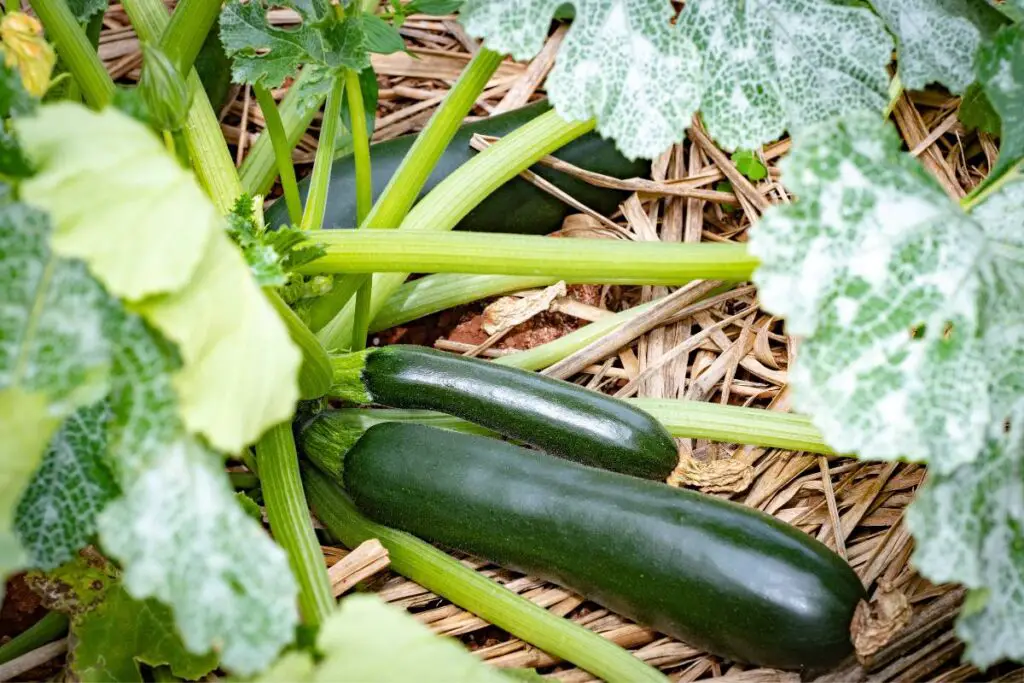
Zucchini can no doubt thrive in hot weather, but extreme heat can harm them and even invite infestations.
If you live in a significantly warmer zone where the temperature can cross 115°F, Zucchinis can suffer during the hottest months.
That won’t stop you from growing Zucchini.
One option is to protect them from the extreme heat by increasing watering, mulching, and providing shade.
Another option is to grow some heat and disease-resistant Zucchinis.
These can endure heat and even fight diseases.
Here are some heat and disease-resistant Zucchinis to grow in the hotter zones, like 10-12, where temperature can cross 115°F:
- Aehobak (Korean Zucchini)
- Dunja
- Desert
- Emerald Delight
- Golden Glory
- Partenon
- Spineless Perfection
These can tolerate enough heat for prolonged periods and resist diseases like Powdery Mildew, Cucumber Mosaic Virus, Zucchini Yellow Mosaic Virus, Papaya Ringspot Virus, and Watermelon Mosaic Virus.
Harvesting in Hot Weather
Warmer zones have prolonged warm weather conditions.
For example, Zone 7 receives prolonged temperate and warm weather for 6-7 months.
It is more than enough for the Zucchini to mature and pick.
You may have to harvest them when the weather is still warm, and frost has not hit your region.
Moreover, due to the warm weather conditions, Zucchini can mature faster and get ready for harvest.
The same applies to zones 8-12.
No matter your zone, Zucchinis should always be harvested when they have reached 6-8 inches in length and 2 inches in diameter.
Young Zucchinis taste better and can be quickly cooked.
You can pick them when they are a bit longer, but leaving them too long in the plant under the sunlight can damage their taste.
You can snap the Zucchinis or cut them with a knife for a precise cut.
Ensure the fruit contains around 1 inch of stem to avoid rotting.
Do not pull them.
Harvest in the early morning, when the weather is cool and the plant is not exposed to or stressed by heat.
Heat-Resistant Companion Plants
If you belong to a warmer zone with extremely high temperatures, you can grow Zucchini with some heat-loving plants.
While companion planting, I prefer growing the taller plants behind the Zucchinis so they do not block the sunlight from reaching them.
But when the temperature in your region is consistently high, you can grow some tall, heat-resistant plants in front of the Zucchinis.
The sunlight will penetrate these plants and reach your Zucchini, saving the Zucchini from heat stress and sunburns.
Along with this, you must also ensure that these plants and Zucchinis can benefit from each other.
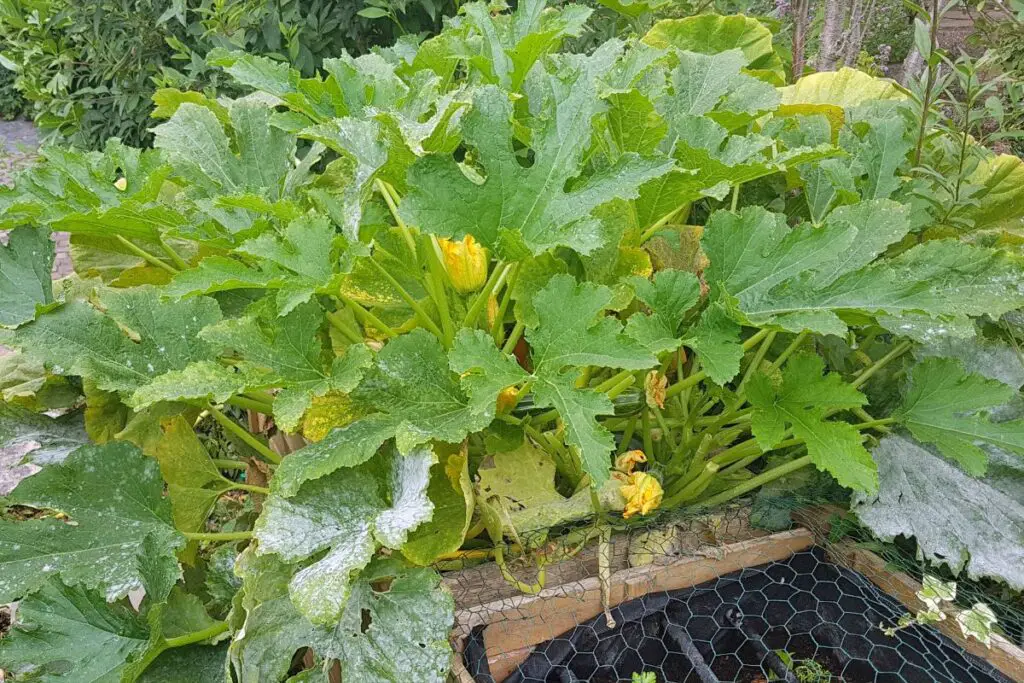
Here are some heat-resistant plants to grow with Zucchini:
- Bell peppers and hot peppers
- Corn
- Peas and beans
- Tomatoes
- Sunflowers
- Marigold
- Lavenders
Plant these in a location where they can guard your Zucchinis from direct sunlight and provide partial sunlight during hot summers.
These plants can also benefit the Zucchinis.
For example, marigolds, sunflowers, and lavenders can deter pests.
Peas and beans are from the legume category.
They can add nitrogen to the soil and boost Zucchini growth.
The Corn plant’s height will support Zucchini’s spreading vines.
Final thoughts
Zucchinis love warm weather, but scorching weather harms them. Their ideal temperature range is 70-90°F. Zucchinis can stay undamaged when the temperature stays within 95°F. It can also tolerate 100-115°F, but the plant may start suffering a little once the temperature crosses 100°F. This tolerance is what makes the Zucchinis favorite for most gardeners.
When the temperature crosses 115°F, shade your plant with a shading cloth, water them frequently to maintain a consistent moisture level, and add mulch to trap the moisture and prevent evaporation. You can identify a stressed plant by signs like discolored leaves, wilted leaves and stems, fruits losing color, leaves turning brown due to sunburns, and dry and hard soil.
In the hotter zones, Zucchini mature faster. The weather can stay hot enough when they get ready to pick. The best time to harvest is in the early morning when the weather is still cool and the sunlight’s intensity has not increased. Make sure the fruits are 6-8 inches long and 2 inches in diameter. Grow some heat-resistant varieties along with Zucchini. These can also work as shade and protect your plant from extreme sun heat.
Will Zucchini survive cooler temperatures?
Zucchinis are warm-weather lovers. They can tolerate up to 50°F. Below this, they start suffering. Some can tolerate temperatures up to 32°F, but not for extended periods.
At what temperatures should we protect Zucchini plants?
When the temperature goes below 50°F or exceeds 95-100°F, you must protect your plant. In the cold, use frost covers and mulch. In the summers, cover with shading cloth, add mulch, and increase watering.
Reference: Zucchini Wikipedia

